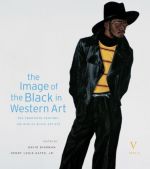Originally conceived in 1960 by French U.S.-based philanthropists Dominique and John de Menil, The Image of the Black in Western Art was “prompted” by what one of the project's patrons, Dominique de Menil, described as “an intolerable situation: segregation as it still existed in spite of having been outlawed by the Supreme Court in 1954” (Dominique de Menil, “Acknowledgements and Perspectives,” The Image of the Black in Western Art. Volume 1: From the Pharaohs to the Fall of the Roman Empire, Fribourg, Switzerland: Office Du Livre, 1976, ix). Within the volatile social and racial politics of the 1960s and 1970s, a wealth of other educational material about African American history would also emerge, seeking to provide more of the formerly hidden history of black people in America. Spoken-word records such as Adventures in Negro History, produced by Pepsi Cola in 1966; Afro-American History: In Song and Story, a four-LP box set, produced by Encyclopaedia Britannica in 1969; and The Dialect of the Black American, another LP, published by the utility company Western Electric in 1970 illustrate the extent to which philanthropy extended into corporate America, and was not only the preserve of individuals such as the de Menils.
However, what distinguishes The Image of the Black in Western Art from other philanthropic initiatives of the time is that while very much a response to a racially fractious society, the de Menils’ ambitious and altruistic project offered a different kind of introspection that was predicated on the visual. Although during the early part of the twentieth century African American artists would receive support from a number of primarily white philanthropists and patrons, including William E. Harmon, Nancy Cunard, and Carl Van Vechten, what also distinguishes The Image of the Black in Western Art is that it included, but also looked beyond, U.S. artists. It would become a monumental research and publishing project involving an international coterie of white scholars who attempted to provide the most comprehensive history of the ways in which black people had been represented in Western art. Such was the scale of the research that it would be sixteen years before volume1, titled From the Pharaohs to the Fall of the Roman Empire, was published in 1976, and a further twenty-nine years from the origin of the project before volume 4, From the American Revolution to World War I, was published 1989.
This provides a backdrop and gives some rationale as to why, under the auspices of Harvard University and its W. E. B Du Bois Institute for African and African American Research, volumes of The Image of the Black in Western Art have over the past few years been reprinted and expanded. Volume 3, never previously published, has also been completed. Yet most significant is the production of an entirely new volume. The Image of the Black in Western Art: The Twentieth Century, Volume V is divided into two parts, Part 1: The Impact of Africa and Part 2: The Rise of Black Artists. For a number of reasons this two-part volume represents a substantial undertaking and achievement. It comprises twenty newly commissioned essays by sixteen curators, anthropologists, art historians, and cultural theorists. Furthermore, while the original volumes covered historical periods prior to and after the abolition of slavery in the United States and Europe, they did not venture far into the twentieth century. Therefore, the subsequent “scramble for Africa” and postcolonial period become rich timeframes to mine and examine attitudes toward “race” and representation of the black subject in the modern and postmodern world—substantial areas not previously attended to in earlier The Image of the Black in Western Art publications.
Full version published for caa.reviews http://www.caareviews.org/reviews/2541
Part I The Impact of Africa, Part 2 The Rise of Black Artists
Edited by David Bindman and Henry Louis Gates, Jr. Associate Editor Karen C. C. Dalton
The Belknap Press of Harvard University Press, Cambridge, Massachusetts, London, England 2014
View more information at: http://www.caareviews.org/reviews/2541
